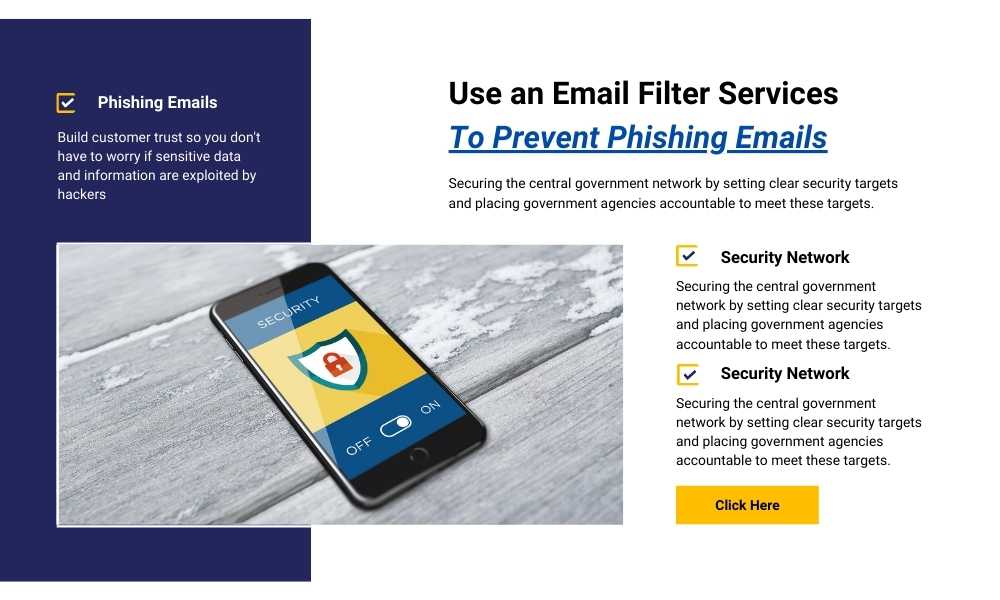Scams using phishing are expanding. It is estimated that phishing directly causes approximately 90% of all data branches. Phishing via Email is a specific issue. Around 3.4 billion phishing Emails will reportedly be sent daily by 2022. Evaluating your anti-phishing approach has never been more crucial, with businesses losing almost $million to cybercrime every minute.
Although many of us would like to believe we can identify a scam Emails immediately. Emails phishing are getting increasingly sophisticated. Phishing Emails frequently bypass spam filters and reach a recipient’s primary inbox without being noticed. Even if you keep spending money on sophisticated spam filters, you can only avoid scams by knowing what to look for. Continue reading for some crucial advice on how to recognize a phishing Emails right away.
1. Grammatical and Spelling Mistakes
Spelling errors are a telltale sign that an Email you’re reading isn’t authentic. There is no justification for poor spelling and grammar since most firms employ spell-checking software as a regular procedure before sending out communications. Even slight dialect inconsistencies can identify a fraudulent Email. Ensure your Email’s default language settings match where you are to help you stay alert.
2. Is There a Strange Sound?
Your current contact list is often used against you in Emails phishing attacks. The opening sentence of an Email is a reliable indicator of its credibility when you’re reading one from a coworker or friend. Consider whether you are dealing with a phishing Email if the greeting looks strange.
3. Email that Lack Urgency
A sense of Urgency is frequently present in phishing Emails to persuade the recipient to take action. If you don’t reply to an Email immediately, it can threaten legal action or financial consequences. This hurry, albeit unsettling at times, is a tool to get you to lose your composure and react without thinking. Take a deep breath and carefully read the Email if it is pressuring you to make a decision right away because it may be a phishing assault.
4. Use Caution while Dealing with Attachments
Even if you are sure you are dealing with a valid Email, you should still be wary about any attachments. Emails are uncommon among businesses that frequently use cloud services and file-sharing applications to distribute documents. You’ll be able to clearly tell whether you’ve fallen for a phishing scam based on the sort of file uploaded. A whopping 35% of all Email-based phishing attacks use DOC files, while malware is frequently concealed in ZIP and EXE files.
5. Recognize Harmful Links
Email phishing is becoming more challenging to identify from legitimate Emails. It’s just too simple for a malicious website to be hidden behind a link that appears to be legitimate. Even if a link looks legitimate in the Email body, the URL itself could not be what it seems. Drag your pointer over a link to reveal its URL before clicking.
6. Do You Think That Email Address Is Correct?
This is a quick and practical method for staying on top of Email security. Even if the Email’s sender is a person you are familiar with, it is always a good idea to double-check the credentials. The Email domain must be correct. If not, you should treat the message itself suspiciously.
7. Don’t Ever Give Out Confidential Information
Never reply through Email with confidential material. Any communication asking for details like credit card numbers or login credentials is almost probably a hoax. Your response should only ask for your full name and one other name.
8. Subject Lines for Email Speak Up
An Email subject line might be used as a barometer to spot phishers. Of course, subject lines can be used as a marketing gimmick. However, there is a difference between a business looking to close a deal and a con artist luring you with promises of rewards that are too good to be true.
Defend yourself against phishing
Email phishing, sadly, are an unavoidable part of modern life. They may cause severe disruption and monetary losses again for the individual. Additionally, firms risk losing intellectual property and incurring permanent reputational harm. However, your phishing protection plan can be significantly strengthened if you adhere to the recommended practice recommendations.


